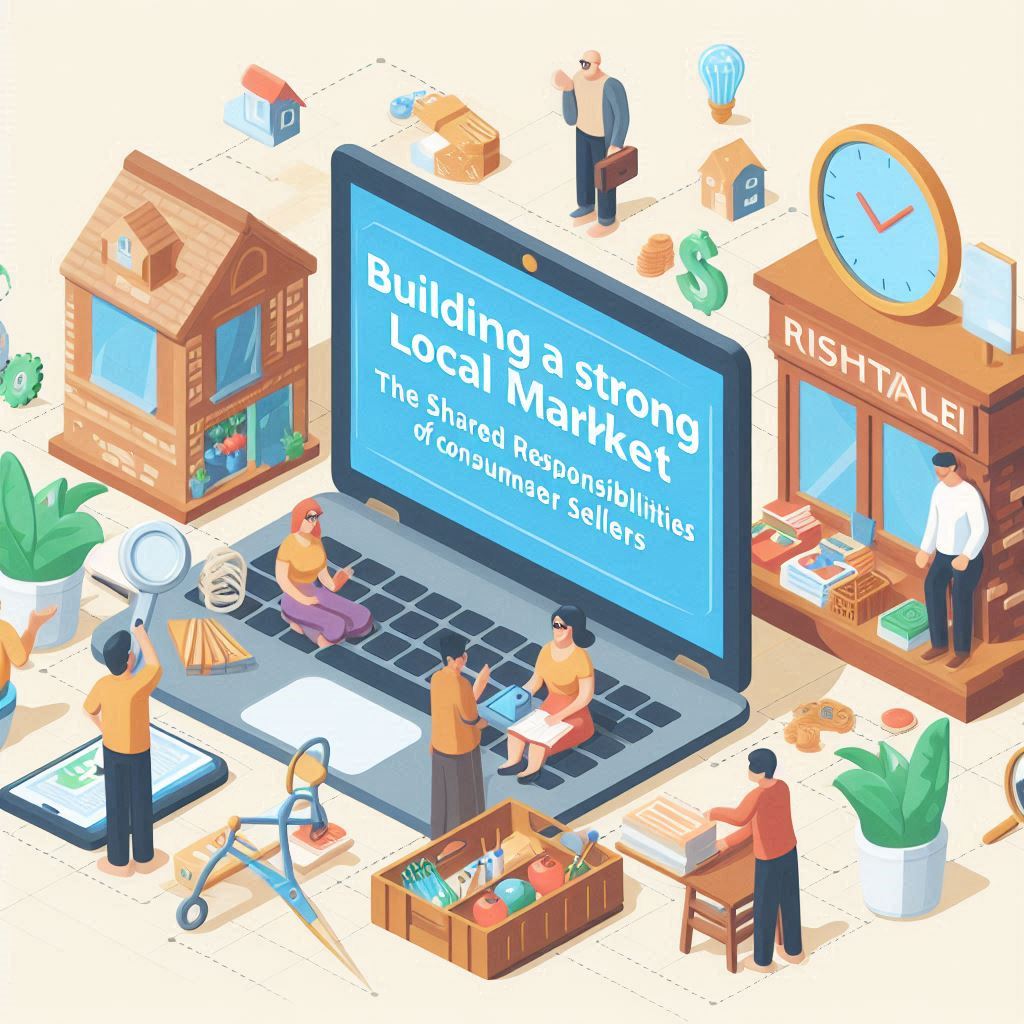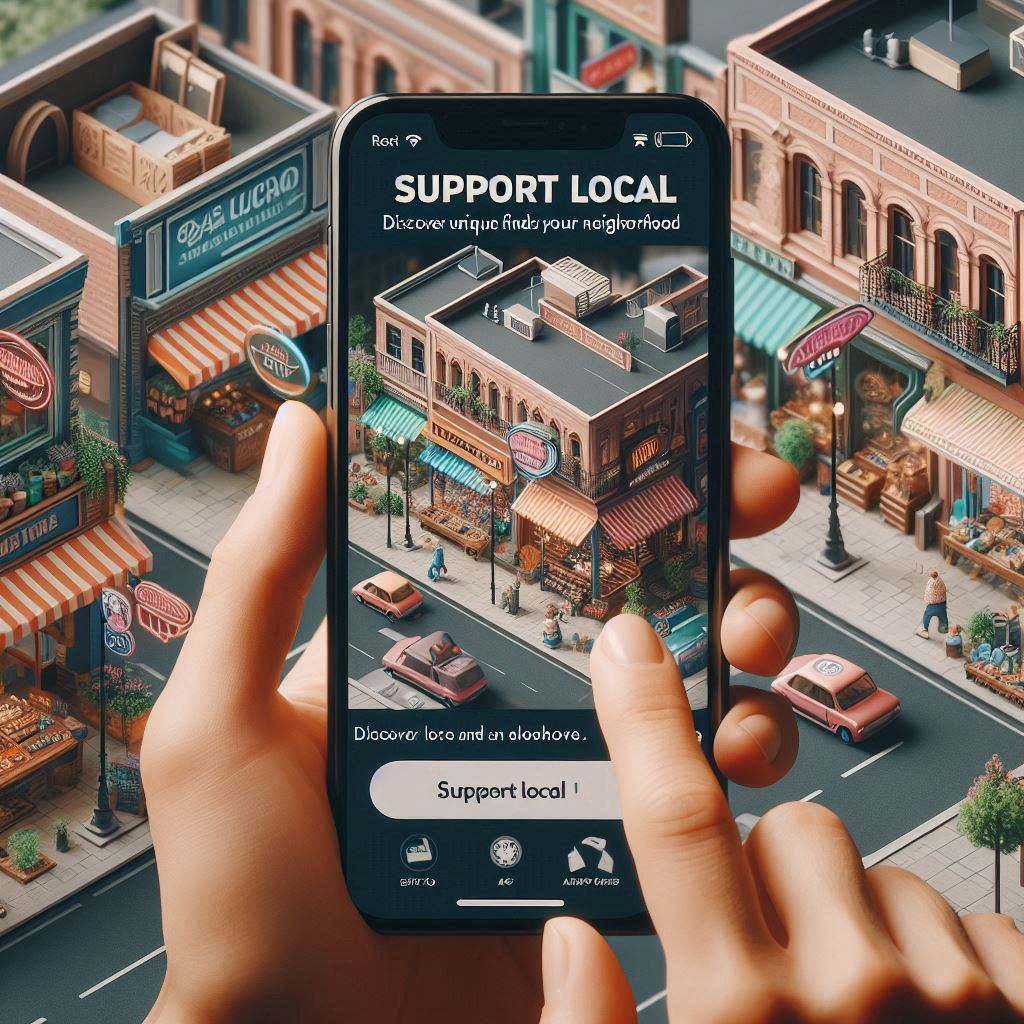Introduction
In today’s fast-paced world, where smartphones have become an integral part of our daily lives, the way consumers shop has undergone a significant transformation. The rise of mobile shopping has revolutionized the retail landscape, and local market businesses must adapt to this new reality to stay competitive.
Why Local Market Businesses Must Adapt to the Mobile Shopping Trend
The mobile shopping trend is not just a passing fad; it’s a fundamental shift in consumer behavior that local market businesses can no longer ignore. This means that local market businesses that fail to embrace mobile shopping risk losing a significant portion of their customer base to online competitors.
Shifting Consumer Behavior Due to Mobile Shopping
The Convenience factor
The rise of mobile shopping has significantly impacted consumer behavior, with the convenience factor being a key driver. Consumers now expect to be able to browse and purchase products anytime, anywhere, without the need to physically visit a store. This “shop-anywhere” mentality has led to increased competition for local market businesses as consumers have access to a wider range of products and services at their fingertips.
The Rise of “Shop-Anywhere” Mentality
The convenience and accessibility of mobile shopping have profoundly changed consumer behavior, with the “shop anywhere” mentality becoming the norm. Consumers now expect a seamless and efficient shopping experience across all channels, including mobile. This shift in behavior has led to increased competition for local market businesses, as consumers can easily compare prices, read reviews, and purchase products from online competitors.
Advantages of Mobile Shopping for Local Market Businesses
Increased Accessibility: Reaching Customers Anytime, Anywhere
Mobile shopping allows local businesses to reach customers beyond their physical location, opening up new markets and opportunities for growth. By optimizing their online presence for mobile devices, local businesses can ensure that their products and services are easily accessible to consumers, regardless of their location or device.
Enhancing Customer Experience Through Mobile-Optimized Shopping
In today’s competitive landscape, providing a positive customer experience is crucial for local market businesses. By investing in mobile-optimized websites and apps, local businesses can offer a seamless and user-friendly shopping experience that meets the expectations of modern consumers. This can lead to increased customer satisfaction, loyalty, and ultimately sales.

Challenges Faced by Local Businesses in the Mobile Shopping Era
Competing with E-commerce Giants: Strategies for Local Market Survival
To compete with e-commerce giants in the mobile shopping era, local market businesses must focus on their unique strengths and offer a personalized, localized shopping experience. By emphasizing their commitment to the community, providing exceptional customer service, and leveraging their knowledge of local markets, local businesses can differentiate themselves from their online competitors.
Overcoming Technical Barriers: The Cost and Complexity of Mobile Integration
Integrating mobile technology into their operations can be a daunting task for local businesses, particularly those with limited resources. The cost of developing and maintaining mobile-optimized websites and apps, as well as the complexity of integrating mobile payment solutions, can be significant barriers to entry. However, local businesses can overcome these challenges by partnering with experienced service providers, leveraging cost-effective solutions, and prioritizing their investments based on their specific needs and goals.
Strategies for Local Businesses to Leverage Mobile Shopping
Developing a Mobile-Friendly Website: Key Features and Best Practices
A mobile-friendly website is essential for local market businesses looking to attract and retain mobile shoppers. Key features of a successful mobile website include a responsive design, easy navigation, clear calls-to-action, and optimized content. By following best practices for mobile web design, local businesses can ensure that their online presence is accessible, engaging, and effective.
Utilizing Mobile apps to strengthen Customer Loyalty and Engagement
In addition to mobile-optimized websites, local market businesses can also leverage mobile apps to build customer loyalty and engagement. By offering exclusive content, personalized recommendations, and loyalty rewards through their app, local businesses can create a strong connection with their customers and encourage repeat business.
The Role of Mobile Payment Solutions
How Mobile Payments are Simplifying Transactions for Local Businesses
Mobile payment solutions not only benefit consumers but also simplify transactions for local market businesses. By accepting mobile payments, local businesses can reduce the risk of fraud, minimize cash handling, and improve the overall efficiency of their checkout process. Additionally, many mobile payment platforms offer advanced features, such as real-time reporting, customer insights, and loyalty program integration, which can help local businesses optimize their operations and better serve their customers.
The Influence of Mobile Shopping on In-Store Sales
Blending Online and Offline Experiences: The Rise of Omni-Channel Retailing
Omni-channel retailing involves creating a cohesive and consistent shopping experience across all channels, including mobile, online, and in-store. By offering features such as click-and-collect, in-store pickup, and mobile-enabled loyalty programs, local market businesses can encourage customers to engage with their brand across multiple touchpoints and drive sales both online and offline.
How Click-and-Collect Services are Bringing Customers Back to Local Stores
One of the key advantages of omni-channel retailing for local market businesses is the ability to offer click-and-collect services. By allowing customers to purchase products online and pick them up in-store, local businesses can drive foot traffic to their physical locations while providing the convenience of mobile shopping. This hybrid approach combines the best of both worlds, offering customers the flexibility they desire while also encouraging in-store visits and potential impulse purchases.
Conclusion
The rise of mobile shopping has undoubtedly transformed the retail landscape, presenting both challenges and opportunities for local market businesses. To succeed in this new era, local businesses must adapt to changing consumer behavior, embrace mobile technology, and provide a seamless, omni-channel shopping experience that meets the needs and expectations of modern consumers.
At Miodeal, we understand the importance of adapting to the mobile shopping trend for local market businesses. Partner with us to stay ahead of the curve and grow in the rapidly evolving retail landscape. Contact us today!
FAQs
How can local businesses adapt to the mobile shopping trend?
Local businesses can adapt to the mobile shopping trend by developing mobile-friendly websites, utilizing mobile apps to engage customers, and offering convenient mobile payment options.
What are the advantages of mobile shopping for local businesses?
Mobile shopping offers several advantages for local businesses, including increased accessibility, an enhanced customer experience, and the ability to reach a wider customer base.
How can local businesses compete with e-commerce giants in the mobile shopping era?
To compete with e-commerce giants in the mobile shopping era, local businesses must focus on their unique strengths and offer a personalized, localized shopping experience.
What role do mobile payment solutions play in the success of local businesses?
Mobile payment solutions play a crucial role in the success of local businesses by simplifying transactions, reducing the risk of fraud, and improving the overall efficiency of the checkout process.













